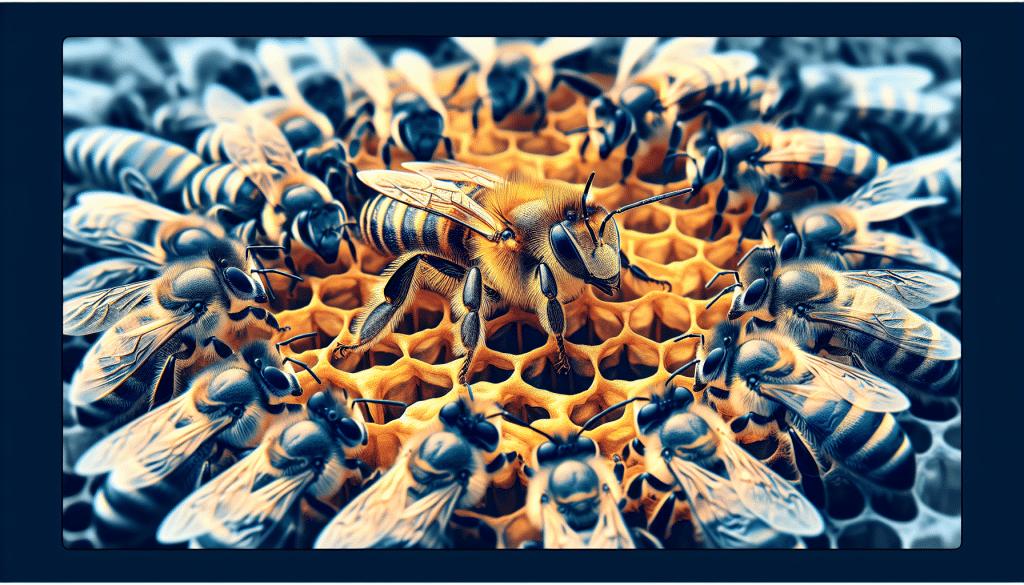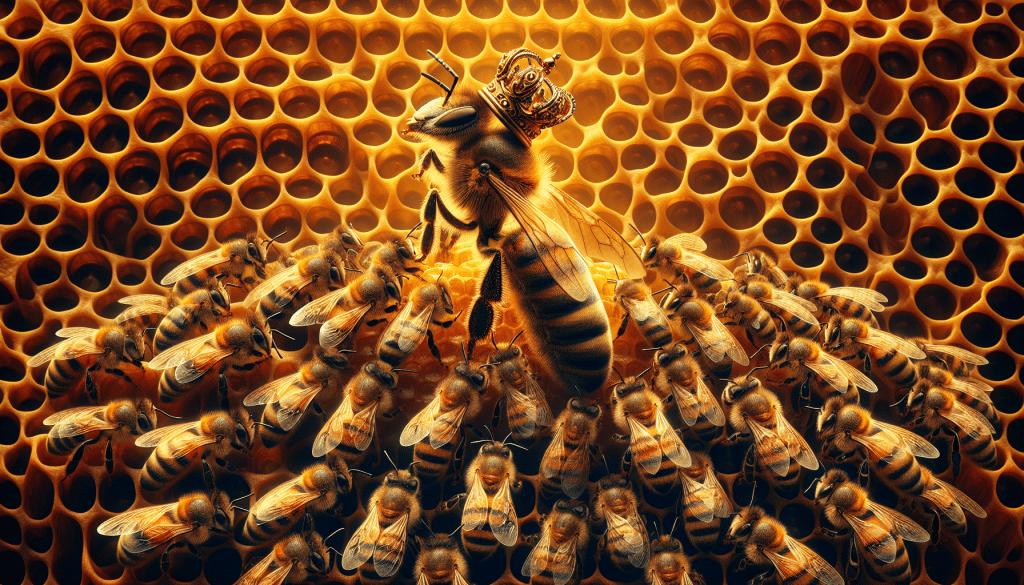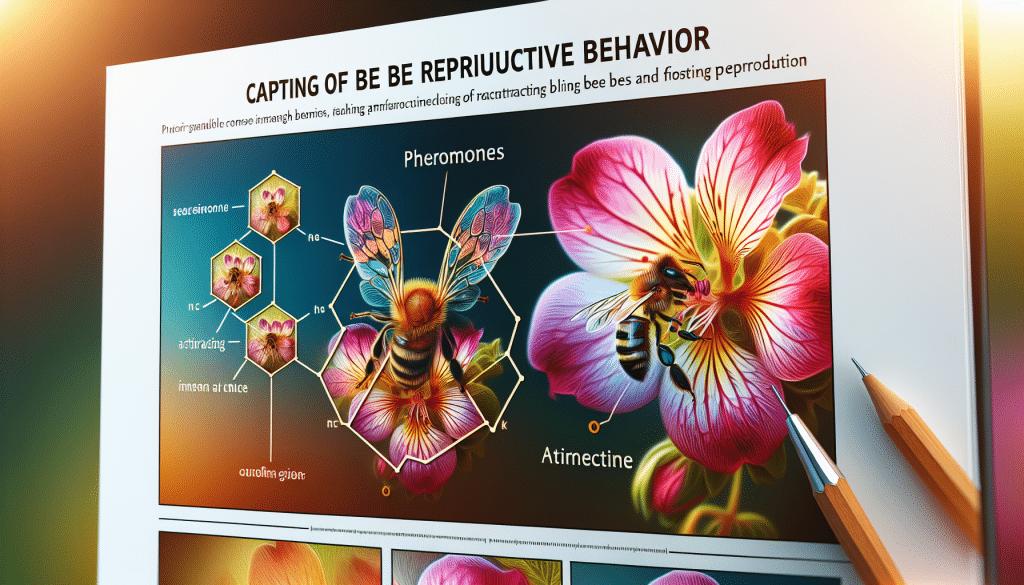Are you curious about how to raise a queen bee? Well, look no further because in this article, you will learn all the fascinating details about the process. Discover the step-by-step guide on how to make a queen bee and become an expert beekeeper. Get ready to learn about the importance of queen bees in a hive, how they are raised, and the incredible journey they undergo to become the ruler of their colony. So, put on your bee suit and let’s delve into the world of raising a queen bee!

Understanding the Role of the Queen Bee
The significance of the queen bee in a hive
The queen bee is a very important bee in a hive. She is the leader and mother to all the other bees. Her main job is to lay eggs, and she can lay up to 2,000 eggs every day! These eggs will later become worker bees, drones, or even new queen bees. Without the queen bee, the hive cannot survive.
Average lifespan of a queen bee
A queen bee has a longer lifespan compared to other bees in the hive. On average, a queen bee can live for about two to three years. However, some queen bees may live for four to five years if they are in a very healthy and well-cared-for hive. During her lifespan, the queen bee continues to lay eggs and keep the hive thriving.
How a queen bee impacts hive productivity
The queen bee plays a crucial role in the productivity of the hive. Her eggs become the worker bees that collect nectar, make honey, and help with pollination. A strong and healthy queen bee can lay a large number of eggs, resulting in a larger workforce and increased productivity for the hive. The more eggs she lays, the stronger the hive becomes.
Choosing the Right Queen Bee
Determining the right breed of queen bee
When choosing a queen bee, it’s important to consider the breed. Different breeds have different characteristics and traits that can be beneficial for specific purposes. Some breeds are known for being gentle, while others may be more resistant to certain diseases. It’s important to research and choose a breed that suits your specific beekeeping goals and the environment in which you’ll be keeping the bees.
Understanding the importance of queen bee’s ancestry
The ancestry of the queen bee is also important to consider. Bees inherit traits from their parents, and a queen bee with good ancestry is more likely to produce strong and productive offspring. It’s advisable to choose a queen bee with a lineage of healthy and productive hives to increase the chances of having a successful hive.
How to identify healthy queen bees
When selecting a queen bee, it’s essential to check for signs of good health. A healthy queen bee should have a shiny and smooth body, without any deformities or signs of disease. She should be active and moving around, and her wings should be strong and intact. It’s also important to observe her behavior and make sure she is mated and ready to start laying eggs. Taking the time to choose a healthy queen bee will greatly contribute to the success of your hive.

Creating a Queen Bee Cell
Understanding what a queen cell is
A queen cell is a special cell in the beehive where a new queen bee is raised. It is larger and differently shaped compared to other cells in the hive. The queen cell is built specifically to provide the developing queen bee with the necessary space and resources to grow and develop properly.
Materials required to build a queen cell
To create a queen cell, you will need some beeswax and a special cup or cell cup. Beeswax is the material bees use to build comb and cells in the hive. The cell cup acts as a frame or mold for the beeswax, providing the structure for the queen cell to be constructed.
Step by step guide to creating a queen cell
- Start by melting some beeswax until it becomes liquid.
- Dip the cell cup into the melted beeswax, making sure to coat the cup fully.
- Hold the cup in place until the beeswax cools and hardens, forming the shape of the cell.
- Carefully remove the cell cup from the hardened beeswax cell.
- Place the finished queen cell into the hive where the bees can use it to raise a new queen bee.
Creating a queen cell requires precision and care to ensure the successful development of a new queen bee.
Feeding the Queen Bee Larvae
Understanding the nutrition needs of a queen bee larvae
Queen bee larvae have specific nutritional needs to support their growth and development. They require a special substance called royal jelly, which is produced by worker bees. Royal jelly is rich in proteins, vitamins, and minerals, providing all the necessary nutrients for the larvae to become healthy queen bees.
How to make royal jelly
To make royal jelly, worker bees collect nectar and pollen from flowers. They then combine it with special enzymes produced in their bodies to create a thick, milky substance. This substance is fed to queen bee larvae and is the key to their healthy development. Beekeepers can also provide additional nutrition supplements to ensure the larvae receive enough royal jelly.
The process of feeding the larvae
Worker bees take turns feeding the queen bee larvae with royal jelly. They carefully place the royal jelly into the cells where the larvae are growing. The larvae consume the royal jelly and use it to fuel their growth. As they grow, they molt several times until they reach the pupa stage. During this process, the queen bee larvae are continually fed royal jelly, allowing them to develop into fully-formed queen bees.

Monitoring the Development of the Queen Bee
Stages in the development of a queen bee
The development of a queen bee goes through several stages. It starts with the queen bee laying an egg into a specially built queen cell. The egg hatches into a tiny larva, which is then fed royal jelly. The larva grows and molts several times until it becomes a pupa. The pupa then undergoes metamorphosis, transforming into an adult queen bee.
Identifying potential problems during development
Monitoring the development of the queen bee is crucial to catch any potential problems early on. Common issues include poor nutrition, diseases, or issues with the queen cell itself. Signs of problems may include the larvae not growing or developing properly, abnormal coloration, or deformities. Promptly addressing these issues can greatly improve the chances of producing a healthy queen bee.
Ensuring optimal conditions for queen bee growth
To ensure the optimal growth and development of the queen bee, it’s important to provide a healthy and stress-free environment. This includes maintaining a clean hive, providing sufficient food resources, and monitoring the overall health of the hive. Regular hive inspections and proper hive management are essential to create the ideal conditions for the queen bee’s growth.
Protecting the Queen Bee from Other Bees
Why other bees may attack the queen
Other bees in the hive may attack the queen bee for various reasons. Sometimes, it can be due to overcrowding in the hive, and the bees may see the queen as competition for resources. Other times, the bees may sense weakness or illness in the queen and try to remove her to protect the overall health of the hive. It’s essential to be aware of these situations and take necessary steps to protect the queen bee.
How to safeguard your queen bee
To safeguard the queen bee, provide her with ample space and resources within the hive. Ensure the hive is well-ventilated and has enough room for the bees to move around comfortably. Regular hive inspections will help identify potential issues and allow for prompt action. Additionally, maintaining a healthy and balanced hive environment will reduce the chances of aggression towards the queen.
Measures to take should the queen bee be attacked
If the queen bee is attacked by other bees, it’s important to act quickly to protect her. Separate the aggressor bees from the queen by gently removing them from the hive. If necessary, move the queen to a temporary hive or queen cage to keep her safe until the situation is resolved. Providing a calm and stress-free environment for the queen is crucial during these circumstances.
Establishing a New Colony With the New Queen
When to establish a new colony
Establishing a new colony with a new queen bee requires careful timing. Ideally, it should be done during the spring or early summer when the flowers are blooming, and there is an abundance of nectar and pollen available. This will ensure the bees have enough resources to build a strong colony and support the new queen bee.
How to transition the new queen bee to the new hive
To transition the new queen bee to the new hive, you can use a technique called “introduction.” This involves gradually introducing the new queen to the hive, allowing the worker bees to become familiar with her scent and presence. It’s important to follow proper introduction methods to ensure the acceptance and integration of the new queen into the colony.
Settling the rest of the bees in the new hive
Once the new queen bee is successfully introduced, the rest of the bees in the new hive will gradually settle in. They will start building comb, collecting nectar and pollen, and taking care of the queen and the brood. It’s important to provide a suitable environment for the bees, including enough space, food resources, and protection from predators or adverse weather conditions.
Breeding Queen Bees
When to start breeding queen bees
Breeding queen bees is an advanced beekeeping practice and is generally done by experienced beekeepers. It’s important to have a strong and healthy hive before considering breeding queen bees. Most beekeepers start breeding queen bees during the spring or early summer when the colony is thriving, and there is an abundance of resources available. This ensures the success and productivity of the breeding process.
How to choose drones for the queen bee
Drones are male bees responsible for mating with the queen bee. When breeding queen bees, it’s important to choose drones from strong and healthy hives. Drones from weaker or unhealthy hives may carry undesirable traits or diseases, which can negatively impact the future colony. Selecting drones from high-quality hives will increase the chances of producing strong and productive queen bees.
Monitoring the breeding process
During the breeding process, it’s crucial to monitor the development of the queen bee larvae and the overall health of the hive. Regular inspections will help identify any potential issues or signs of disease. Proper hive management, including providing adequate nutrition and maintaining a clean hive, will contribute to the success of breeding queen bees.
Replacing an Old Queen Bee with a New One
Signs that it’s time to replace the queen bee
There are several signs that may indicate it’s time to replace the old queen bee. These signs include a decline in egg-laying activity, a decrease in overall hive productivity, or aggression towards the queen. If the queen is old or sick, replacing her will rejuvenate the hive and increase its chances of survival and success.
How to safely remove the old queen
To safely remove the old queen bee, you can either find and gently remove her from the hive or use a technique called “splitting the hive.” Splitting involves creating a new hive with a new queen while allowing the old queen to remain in the original hive. This process ensures the smooth transition and avoids unnecessary disruption to the hive’s dynamics.
Introducing the new queen to the colony
Introducing the new queen to the colony should be done with caution to ensure a successful acceptance. The new queen should be gradually introduced to the hive, allowing the worker bees to become familiar with her scent and presence. Proper techniques, such as using queen cages or excluders, can help facilitate the introduction process and increase the likelihood of a smooth transition.
Understanding Common Queen Bee Problems
Common diseases that affect queen bees
Queen bees can be affected by various diseases, including American Foulbrood, European Foulbrood, and chalkbrood. These diseases can weaken or kill the queen bee, leading to a decline in hive productivity. Regular inspections and proper hive management are crucial to identify and address these diseases promptly, preventing their spread within the hive.
What to do if the queen bee is not laying eggs
If the queen bee is not laying eggs, it may indicate a problem. Possible reasons could be poor nutrition, disease, or old age. It’s essential to determine the cause and take appropriate action. Providing proper nutrition, addressing any health issues, or considering replacing the queen may be necessary to ensure the hive’s continued productivity.
Behavioral problems in queen bees and how to address them
Queen bees can sometimes exhibit behavioral problems, such as aggression towards other bees or poor egg-laying behavior. These issues can negatively impact the hive’s stability and productivity. Addressing these problems may involve determining the underlying causes, providing a supportive environment, or replacing the queen if necessary. Regular monitoring and intervention can prevent these issues from affecting the overall health of the hive.
In conclusion, understanding the role of the queen bee is essential for successful beekeeping. From choosing the right queen bee to monitoring her development and addressing common problems, each step plays a crucial role in maintaining a healthy and productive hive. By following these guidelines and implementing proper hive management practices, you can raise a strong and thriving queen bee, leading to a successful and sustainable beekeeping experience.



